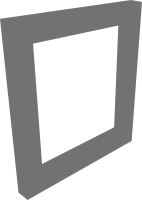X
PRINT ON DEMAND
What is it?
Bodleian Prints, provided by Museoteca, offers high quality digital reproductions of rare and iconic items from the Bodleian Libraries collections.
Sourced from the original manuscripts, all artwork is reproduced using light resistant natural pigments on special 260g/m2 matte fine art paper.
Artwork is available in a variety of sizes, finishes and frames:
Bodleian Prints, provided by Museoteca, offers high quality digital reproductions of rare and iconic items from the Bodleian Libraries collections.
Sourced from the original manuscripts, all artwork is reproduced using light resistant natural pigments on special 260g/m2 matte fine art paper.
Artwork is available in a variety of sizes, finishes and frames:
1)
Locate the images you like best
2)
Select finish, size, quality of paper, framed...
3)
Process payment and provide contact details for home shipping




 PRINT
PRINT